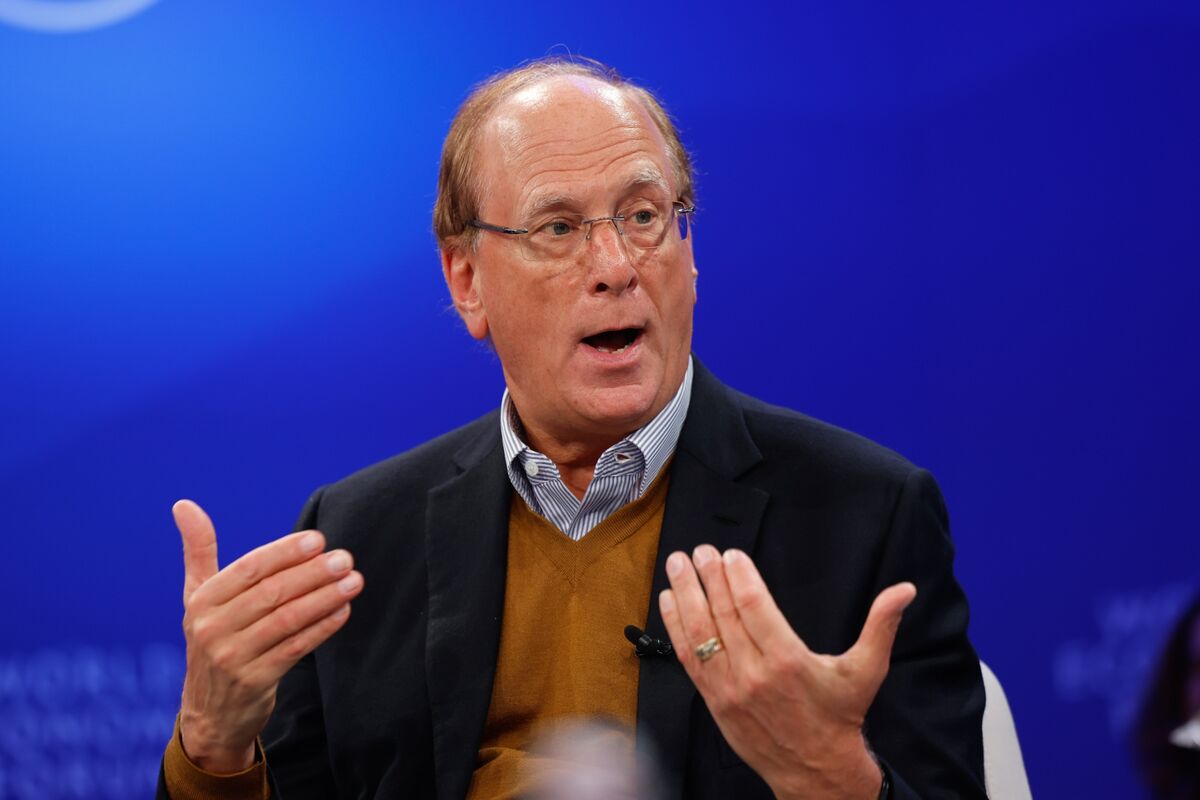Fink's Mass-Market Vision: Democratizing Private Investing
Editor’s Note: BlackRock CEO Larry Fink's recent pronouncements on expanding access to private markets have sent ripples through the financial world. This article delves into the implications of his mass-market vision for private investing.
Why This Matters: Opening the Gates to Private Markets
Larry Fink's push to democratize private investing is a significant development with far-reaching consequences. Traditionally, private markets – including private equity, venture capital, and real estate – have been the exclusive domain of high-net-worth individuals and institutional investors. Fink’s vision challenges this established order, promising to reshape the investment landscape and potentially boost returns for a broader range of investors. This article will explore the key aspects of this vision, its potential benefits and drawbacks, and the challenges involved in making private investing accessible to the masses. We’ll also examine the implications for existing market players and the overall economy.
Key Takeaways
| Point | Description |
|---|---|
| Increased Accessibility | Opening private markets to a wider range of investors. |
| Potential Higher Returns | Access to asset classes historically unavailable to retail investors. |
| Regulatory Hurdles | Navigating complex regulations to ensure investor protection. |
| Technological Advancements | Leveraging technology to streamline processes and reduce costs. |
| Risk Management | Addressing the inherent risks associated with private investments. |
Fink's Mass-Market Vision: A New Era of Private Investing
Fink's vision isn't simply about expanding access; it's about fundamentally changing how private markets operate. He envisions a future where technology plays a crucial role in streamlining processes, reducing costs, and making private investments more transparent and accessible to individual investors. This could involve the use of fractional ownership, improved data analytics, and potentially the creation of new investment vehicles designed specifically for retail investors.
Key Aspects of Fink's Vision:
- Lower Minimum Investments: Reducing the financial barrier to entry for individual investors.
- Increased Transparency: Providing greater clarity on investment performance and risk.
- Technological Innovation: Utilizing technology to simplify investment processes and enhance accessibility.
- Regulatory Reform: Adapting regulations to protect individual investors in private markets.
Detailed Analysis: Challenges and Opportunities
While Fink’s vision is compelling, significant challenges remain. Regulations designed for institutional investors may not adequately protect retail investors. Liquidity concerns are also paramount, as private market investments are notoriously illiquid compared to publicly traded securities. Furthermore, the increased demand could drive up prices, potentially diminishing returns for everyone.
However, the potential benefits are equally significant. Increased participation could lead to a more efficient allocation of capital, fostering innovation and economic growth. Moreover, retail investors could gain access to asset classes with the potential for higher returns than traditional investments.
Interactive Elements: Addressing Key Concerns
Regulatory Hurdles: Protecting the Retail Investor
The regulatory landscape surrounding private investing is complex. Ensuring adequate investor protection without stifling innovation is a critical challenge. This requires a carefully crafted regulatory framework that balances the need for protection with the desire to encourage broader participation. Increased transparency and robust disclosure requirements are crucial.
Technological Solutions: Streamlining Access
Technology holds the key to unlocking mass-market access to private investing. Platforms utilizing fractional ownership, automated investment strategies, and sophisticated risk management tools can greatly enhance accessibility and efficiency. Blockchain technology could also play a significant role in enhancing transparency and security.
People Also Ask (NLP-Friendly Answers)
Q1: What is Fink's mass-market vision for private investing?
A: Fink envisions a future where private markets are accessible to a much broader range of investors, including individual retail investors, through technological innovation and regulatory reform.
Q2: Why is this vision important?
A: It could lead to a more efficient allocation of capital, boost returns for individual investors, and foster innovation and economic growth.
Q3: How can this vision benefit me?
A: You could gain access to potentially higher-return investments previously unavailable to retail investors.
Q4: What are the main challenges with Fink's vision?
A: Regulatory hurdles, liquidity concerns, and the potential for increased price volatility are significant challenges.
Q5: How to get started with private investing?
A: Research carefully, understand the risks involved, and potentially consult with a financial advisor specializing in alternative investments. Be aware that regulations and accessibility vary by jurisdiction.
Practical Tips for Navigating the Changing Landscape of Private Investing
- Educate Yourself: Thoroughly research private investment options and understand the associated risks.
- Diversify Your Portfolio: Don't put all your eggs in one basket. Diversification is key to mitigating risk.
- Consult a Financial Advisor: Seek professional advice tailored to your financial situation and risk tolerance.
- Understand Fees and Expenses: Private investments often come with higher fees than traditional investments.
- Assess Liquidity Needs: Consider how easily you can access your investment if needed.
- Monitor Performance Regularly: Keep track of your investments and their performance.
- Stay Informed: Stay updated on regulatory changes and market trends affecting private investments.
- Start Small: Begin with a smaller investment to gain experience before committing significant capital.
Summary: Larry Fink's vision of democratizing private investing presents both significant opportunities and substantial challenges. While the potential benefits are considerable, navigating the regulatory hurdles and managing the inherent risks is crucial for both investors and market participants.
Closing Message: The future of private investing is rapidly evolving. By understanding the implications of Fink's vision and embracing the technological advancements that are reshaping the industry, investors can position themselves to participate in this transformative shift. What are your thoughts on the future of private investing and its accessibility to the masses?
Call to Action: Subscribe to our newsletter for updates on the evolving private investment landscape and receive exclusive insights from industry experts. Share this article with your network to spread awareness about this important development.

